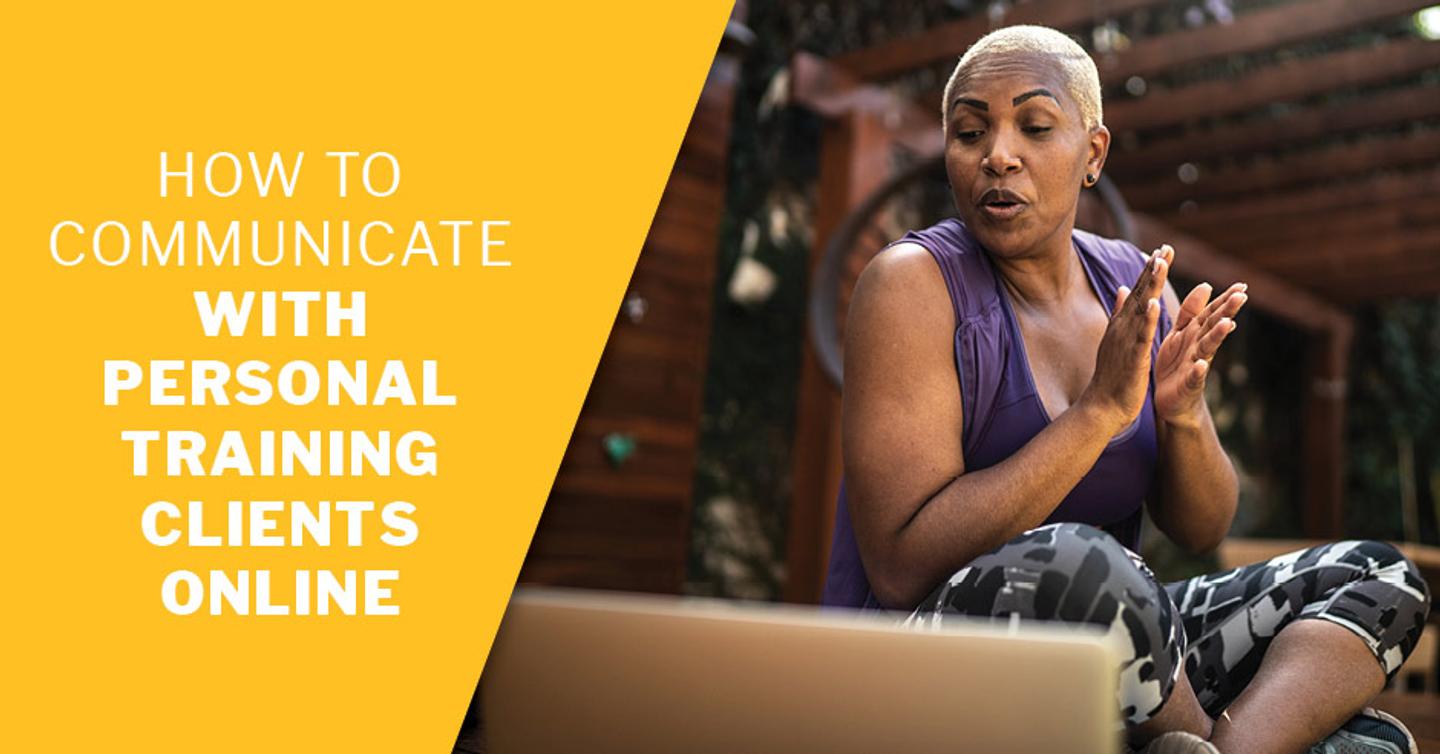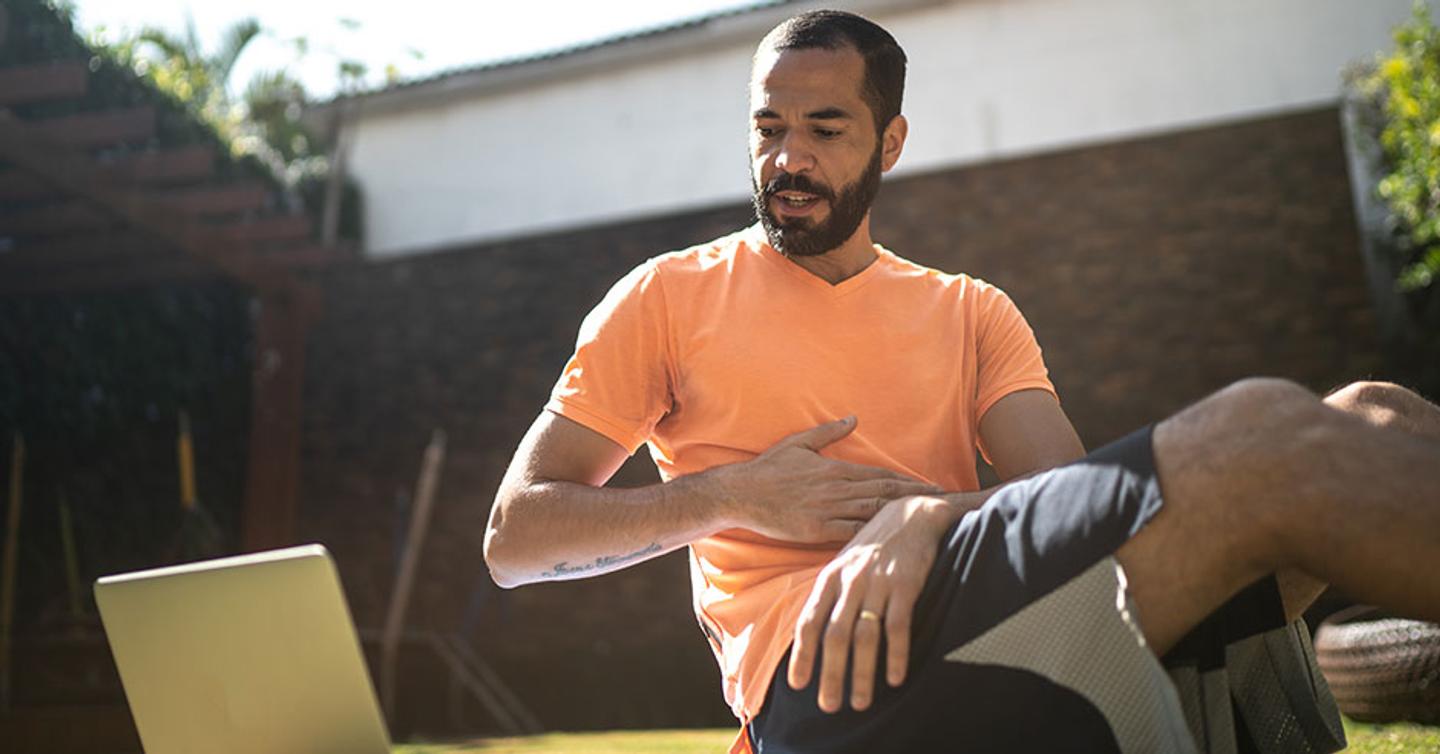
How to Communicate with Personal Training Clients Online
Reading Time: 7 minutes 39 seconds
BY: ISSA
DATE: 2020-12-21
Communication between a personal trainer and their client is one of the most important elements of the relationship and a key to their success. Most clients are opening up a vulnerable part of themselves and trusting you to help them overcome layers of challenges to reach their fitness goals.
If Covid-19 forced you to quickly transition your personal training business to an online format (like the majority of the fitness industry), there are several things you want to keep in mind to properly manage the way that you communicate with your clients and support the relationship.
In this article, we explore some of the reasons why consistent contact between clients and their personal trainer is needed. We'll also identify several of the most common communication platforms and provide tips on the best ways to communicate with your virtual clients.
Also check out ISSA's Online Coaching Certification—the most inclusive and holistic online coaching certification available right now! Online fitness isn't just for right now, it's the future of the fitness industry.
The Importance of Knowing How to Communicate with Personal Training Clients Online
Communication is important in any business, but it must be effective. Communication is not simply talking at people, or just listening. And even if you have learned how to interact well with your clients in-person, moving to an online structure is a whole new ball game.
Whether you're new to training, an old hand at working with clients in real life, or you are just moving to online training, it's important to understand just how important good communication is:
Effective communication gets you clients. If you cannot express what you have to offer, your value, credentials, and experience make no difference in winning clients.
Regular, personalized communication with clients keeps them coming back. This is even more important when training online. If you don't reach out and check in regularly, you're like a ghost to your clients.
Communication builds rapport and trust. Your clients need to know you care and are willing to take the time to check in and stay up to date.
Clients need encouragement, and they need to learn from you. These come from good communication.
Communication is a practical element of training. You must talk to and listen to your clients to gauge and improve motivation and assess progress. Communication is how you explain to clients what to do to meet their goals.
Communication as a Practical Part of Training
Once you begin virtual personal training, having efficient forms of communication becomes even more important in building relationships with new clients, staying connected with current clients, and supporting client retention. The following are a few examples of the important reasons for personal trainer/client communication:
Meal Plan Check-ins
Although creating specific nutrition plans is outside the scope of practice for a personal trainer, having an in-depth view of what clients are putting into their bodies can provide insight into their habits and eating behaviors that could affect their progress.
Weigh-ins/Progress Updates
If you aren't able to meet with your online clients to assess their progress, you will want to guide them with tools, measurements, or calculations that will allow them to provide you with appropriate updates. Many personal trainers will discourage clients from paying too much attention to the scale because it isn't always the best indicator of the changes occurring. But, it is a form of measurement (scale) that most people have access to. There are, however, several other ways to measure progress. Check out this link for more info on how your clients can provide progress updates without a scale.
Daily Workouts and Assessments
You may want clients to update you on how they feel after a particular training session or just confirm that it was completed. You may even want them to submit videos of themselves so you can evaluate form or request that they submit their workouts with completed training variables notated (reps, weight, etc.).
Questions and Concerns
Most personal training clients don't have the same health and fitness education that you have. Basic information that comes easy to you may not make sense to them. Because of this, it is very common for clients to have questions about different foods, exercises, pains, emotions, etc. Being able to address questions and concerns in a timely manner is a huge component of building trust and the client/trainer relationship.
Scheduling Modifications
If your client needs to change the day/time scheduled for a live personal training session or virtual check-in, they will need to connect with you to make the adjustment. You may want to consider having calendar access with a scheduling/rescheduling feature on your website or available on your online personal trainer software to allow clients to make changes freely. But, if you don't have those capabilities yet, your clients will need to contact you for schedule changes.
Training Sessions
Your live or recorded workout sessions are another way you communicate with your personal training clients. Your body language, tone of voice, articulation, clarity, and even the platform you choose are all ways you are communicating with your clients.
Communication Platforms
Once you understand the type of information that needs to be shared back and forth between you and your personal training clients, you can determine which platforms are best for you, your clients, and your business. The following list includes some of the most common communication platforms available in the U.S. today:
Facebook
Text
FaceTime
Email
Instagram
WhatsApp
Skype
Google Meet
Social media platforms (Facebook, Instagram, etc.) are common ways to interact. Live streaming, group communication, and direct messaging help make these a good option to stay connected to your clients.
Video conferencing (Zoom, Google Meet, etc.) are great platforms to connect face-to-face for screen sharing, check-ins, and live training sessions.
Communication apps (text, email, WhatsApp, etc.) are perfect for quick questions and check-ins.
If you find the right online personal training software, you can combine several of these and have them all in one place.

Tips for Communicating with Your Online Clients
You've identified what information needs to be shared back and forth and the platform that works best for your business. Now, you need to consider how you actually communicate with each client effectively and professionally.
1. Be Clear and Concise
Whether you're leading your clients through a workout plan or touching base with them on questions, it's important to articulate information clearly to minimize confusion. You will likely also have multiple clients that you need to communicate with over the course of the week, so, you want to keep things direct and condensed so you have the time to connect with each client.
2. Use Simple Language
Like we mentioned previously, most clients don't have the same health and fitness education that you do. So, you may not convey the message you want to unless you simplify the way you say things. For example, if you tell your client they need to externally rotate their foot and they aren't sure what external rotation means, they are not going to understand what you want them to do.
3. Encourage Them to Ask Questions
Even though you will focus on simple language, that doesn't ensure that every message you communicate is clear. Encourage your clients to ask questions when they don't understand so you can explain further or find a different way to communicate what you're trying to say.
4. Be Authentic and Personal
Being real and authentic is a must, always. If you're a busy personal trainer, you may need to rely on auto messaging or templates for some of your communication, but you want to be able to have the capacity for personal communication with each of your clients as well.
5. Be Aware of the Lack of Non-Verbal Communication
Unless you are using a platform for video calls (Zoom, Skype, Facetime, etc.), it's important to be cautious of how you are communicating with clients. Non-verbal communication (tone of voice, body language, eyes, volume, etc.) are all extremely important in the way humans communicate. So, make sure you are cautious of how you sound using only your words.
6. Individualize Communication
Recognize that each client may need different types of communication or different frequencies. A seasoned client may not want or need to check in with you every day. However, a new client may require daily check-ins and motivation to stay on track. It's important to establish what's appropriate for each client and adjust to their needs.
7. Be Present
When you are communicating with a client, stay present and give them your time and attention. This goes for your personal training sessions as well. If you're in a virtual training session with a client, you shouldn't be checking emails or responding to text messages.
8. Global Reach
If you're training locally, this may be irrelevant, but if you have clients outside of the U.S., there are a few things you will want to consider.
Communication platform: Ensure that you establish an easy way to communicate. Not all platforms are available in every country and you definitely don't want clients to rack up a hefty phone bill for international texts and calls.
Time Zones: Your client's time zone may be very different from yours, so, it will be important to share with them your availability and appropriate response-time so they know what to expect.
Language: Even if your clients speak the same language as you, there are certain words that mean different things in different cultures. You likely won't know all of this ahead of time but it's important to be aware so you can adjust and communicate differently when needed.
9. Be Professional
The way you interact with your clients is a representation of you and your brand. It's important to respond back in a timely manner and in a professional way. Articulation, limited/no spelling errors, and good manners are all important components of your business.
10. Set Boundaries
Although it's important to be timely in your response to your personal training clients, that doesn't mean you need to respond immediately to every client question or concern. Be clear with your clients on how they can reach you, other features on your site/app that might be able to help with their questions, and your response time. It's important that clients know you won't be responding back during training sessions or at all hours of the night. One of the luxuries of being a personal trainer is not having a 9-5 schedule, however, that sometimes means that job-related tasks are needed outside that timeframe. But, if you set clear boundaries with your clients on how and when to communicate, you'll be more effective and have the opportunity to turn work off and check out from time to time.
Are You Ready to Make a Difference?
If you're passionate about helping people, looking for an awesome career that gives you the freedom you want, and love health and fitness check out ISSA's Certified Personal Training course. You can get certified from the comfort of your home and start making a difference right away!
Featured Course
ISSA | Online Coach
The ISSA Online Coaching Certification is the fastest way to transition a fitness coaching business online. This course allows you to pick and choose what you need to learn about so it fits the needs of a new or seasoned trainer. The on-demand information is delivered in bite-sized chunks and it includes everything from how to set up email campaigns and FaceBook ads to positioning and selling your product to prospective clients.